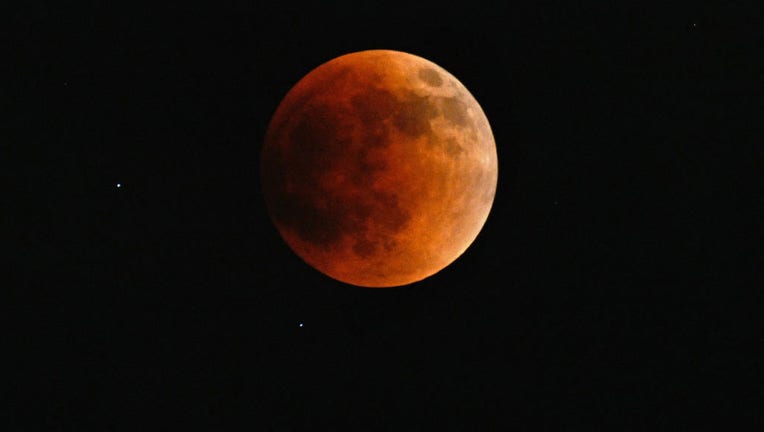Total lunar eclipse's 'blood moon' delights across the US

CHARLOTTE, USA - MAY 15: Blood Moon, a total lunar eclipse in Charlotte, N.C., on May 15, 2022 (Photo by Peter Zay/Anadolu Agency via Getty Images)
Stargazers who stayed up overnight had the chance to see a total lunar eclipse this past weekend.
For those on eastern time, the best part of the eclipse started around 10 p.m., FOX Weather reported, when the darkest part of the shadow began to create a noticeable change in the moon’s light.
Around 11:30 p.m. ET is when the main part of Earth’s shadow fell over the moon, known as totality. Just after midnight ET, the deepest eclipse was visible. The eclipse ended just before 3 a.m. Monday.
The eclipse was visible to most of the Americas, western Europe and most of Africa.
Anza-Borrego Desert State Park in California shared a live video of the eclipse, displaying the moon in a reddish hue.
The National Weather Service station in New Braunfels, Texas, also shared a timelapse video of the event.
A "blood moon" occurs during a total lunar eclipse, which is when Earth lines up between the moon and the sun to hide the moon from nearly all of the sunlight but allow just enough light through to turn the moon a deep red color.
But as astronomer Derek Demeter told FOX Weather, it may be time to rebrand total lunar eclipses as "rainbow moons."
If you get the chance to watch a total lunar eclipse through a telescope, there are even more colors of the rainbow to see besides red.
"You can actually see on the very edges of the moon, a blue light, then an orange light, a yellow light. You see all the colors of a rainbow," he explained. "So really a total eclipse moon should be called a rainbow unicorn moon because, actually, you see all the colors of the rainbow, cast on the moon because a portion of the white light that is split into the colors of the rainbow can be seen on the moon."
RELATED: 1st solar eclipse of 2022 appears in southern skies
Unlike a solar eclipse, you don't need special glasses or protective lenses to watch a total lunar eclipse — only a clear sky.
The next total lunar eclipse happens Nov. 7-8 and will be a better show for the West Coast because the total eclipse happens after sunrise for the eastern U.S.
Space enthusiasts have also begun counting down the days until the next total solar eclipse, taking place in the U.S. on April 8, 2024. Large parts of the country will be cast in the complete shadow of the moon that day.
FOX Weather contributed to this report.

